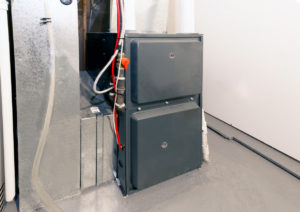 Furnace heat output can have a direct impact on your indoor comfort this winter. It’s also a factor in monthly heating bills, as well as impacting decisions about which type of furnace to purchase if you’re upgrading. Short for British Thermal Units, BTU is the common metric for expressing units of heat.
Furnace heat output can have a direct impact on your indoor comfort this winter. It’s also a factor in monthly heating bills, as well as impacting decisions about which type of furnace to purchase if you’re upgrading. Short for British Thermal Units, BTU is the common metric for expressing units of heat.
Furnaces actually have two BTU ratings: The input BTU specification expresses the total amount of fuel the furnace consumes, while the output rating indicates the actual usable heat the furnace can generate. For example, a furnace with 100,000 BTU input and an 80% AFUE efficiency rating will actually provide 80,000 BTUs of heat output to warm the house.
What’s the Typical BTU?
The input BTU of furnaces installed in U.S. homes generally ranges between 40,000 and up to as much as 200,000 BTUs. On a national average, a standard 2,000-square-foot home will require between 80,000 BTUs and up to 115,000 BTUs to keep the house comfortable.
How Climate Matters
The heating climate zone of a home determines the average amount of BTUs to keep a home comfortable in winter. Yuma is located in heating climate zone 1 — the hottest — which generally requires a furnace sufficient to provide between 30 and 35 square BTUs of output heat per each square foot of the house.
Getting Size Right
A sizing survey of your house by a qualified HVAC contractor can provide an accurate assessment of its heating and cooling requirements, which in turn results in optimum temperature control and energy efficiency, as well as lower operating costs. The sizing process utilizes industry-standard Manual J software to calculate specific variables, such as:
- Total square footage of the house
- Number and size of windows and doors
- Ceiling height
- Type, amount, and quality of insulation
- Local climate
- Exposure to daily sunlight
With this data, the contractor can recommend a furnace with the precise BTU output to meet the specific heat output requirements of your home and location.
To learn more about furnace-heat output and how it impacts home comfort and efficiency, talk to the professionals at Hansberger Refrigeration and Electric Company.

